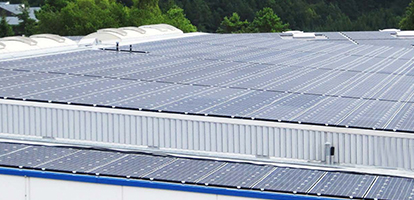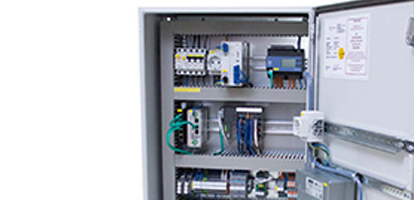


If distribution networks are loaded to their limits, then network operators cannot issue connection permissions for new renewable energy systems to feed into the network. A pilot project in Bavaria is showing how a photovoltaic system can be economically operated purely for self-consumption.
In the past, operating PV arrays was primarily economical in that supply tariffs for the electricity guaranteed that the power produced could also be sold. However, the falling payments for electrical supply over the last few years have made self-consumption of the energy more important. Self-consumption becomes even more necessary, when the distribution networks are so overloaded that network operators can no longer connect systems for feed-in. This was precisely the case in Pottenstein in Upper Franconia. Klubert + Schmidt, an automotive supplier, wanted to install a PV array on the roof of their production hall there.
“Bayernwerk Netz GmbH, which operates the Pottenstein distribution network, was willing to link in the PV array, which has an approximately 1000 kilowatt peak. However, the connection point was several kilometers away,” explains Sebastian Kremer, a project manager at M. Münch Elektrotechnik GmbH & Co. KG. The company operates its own photovoltaic and biogas systems, and plans and implements PV systems, including the PV modules, brackets, control technology, inverters, and network connections, for their customers, like agricultural operations and industrial companies. “Because energy costs are increasing, and the price for PV arrays is simultaneously falling, solar energy consumption is more economical than ever,” emphasizes Kremer, who supervised the project for Klubert + Schmidt.
Although the supply from the planned system would have corresponded to the average electrical consumption of the producing company, the network operator initially balked at the request for a network connection directly at the company location. To obtain the connection release for the system, they had to ensure than no supply into the network would result. The network operator additionally demanded a security circuit that could shut down the system within 10 seconds if a feed-in were to occur despite this.
Safety Circuits from WAGO
Because the economic calculations remained positive, despite the restrictions, Klubert + Schmidt green lighted the project. Münch relies on a PFC200 Controller from WAGO to control the entire PV system. “We have already had good experiences with the WAGO-I/O-SYSTEM 750 on other projects,” states Kremer. “There is a suitable module available for every signal that we have to process.” The controller receives the measured values from the medium-voltage network via Modbus TCP; the 3-Phase Power Management Module from WAGO records the data from the low-voltage part of the system, and controls the inverter using an RS-485 interface.
Other digital input/output modules and analog input/output modules complete the system. In addition, sensors are connected that measure values for the external temperature and current solar incidence, for example. “Theoretically, we could use this to determine the potential production of the PV array,” explains Kremer. Since the control cabinet with the controller is located outside, Münch relies on components from WAGO’s XTR Series. These are designed for an expanded temperature range from -40°C to +70°C. Therefore, the control cabinet does not need climate controls.
A conventional feed-in controller, like those used in other photovoltaic systems, is installed on the controller. However, this controller required significantly more programming, because the safety circuit must prevent network feed-in according to the network operator’s provisions. The system went online in the third quarter of 2017, and has since flawlessly produced electricity for the automotive supplier. Münch can monitor operations at all times using online access, which was likewise implemented via the WAGO controller.
A Business Model with a Future
Kremer describes specifics of this system, “In contrast to systems that are optimized for feed-in, the solar panels at Klubert + Schmid are oriented toward the east, west, and south. This allows for the most uniform production during the day.” This is one of the results from the economic calculations, which analyzed the load curves of the automotive supplier and compared them to potential energy production from the PV array.
Of the predicted generation of 652,000 kilowatt hours per year, more than 88% should be consumed on site. Self-consumption numbers at this level made a photovoltaic system economical even without a network feed-in. Since Klubert + Schmidt operate on a three-shift system, the PV array will eventually be expanded to include battery storage. Then, the company will be able to use their solar power over night, and further reduce their energy costs. In addition, the storage device will allow Klubert + Schmidt to actively participate in load management, and thus alleviate some of the stress on the distribution network.
The experts at Münch are also satisfied with the success of the pilot project. “The photovoltaic system is a pilot project for areas where the distribution network can no longer accommodate additional feed-in,” says Kremer. “If we collect positive experience here, then we can safely implement other PV arrays without feed-in.” The company has already received their first orders for new systems.
Text: Ulrich Menzel | WAGO
Photo: M. Muench Elektrotechnik